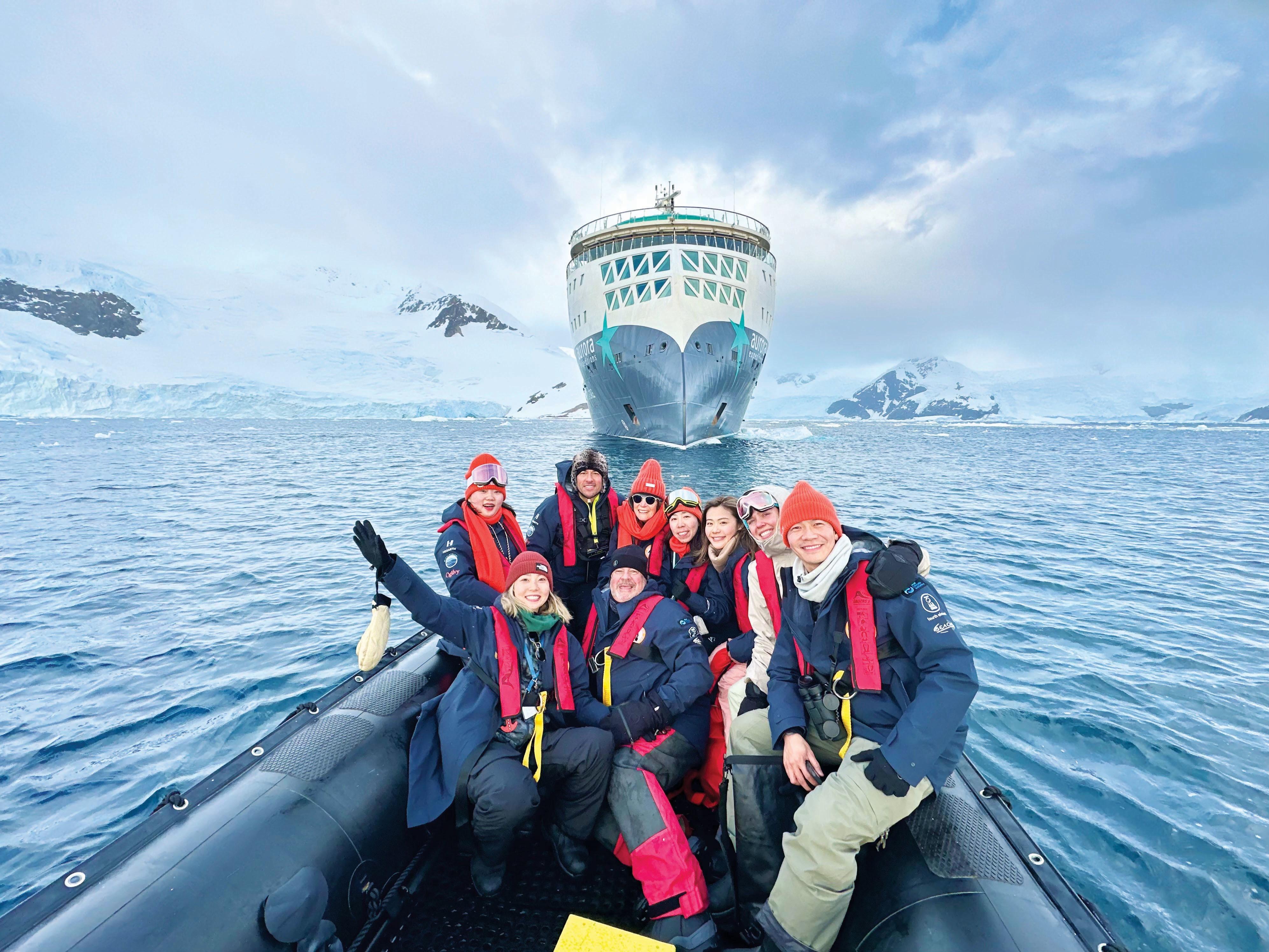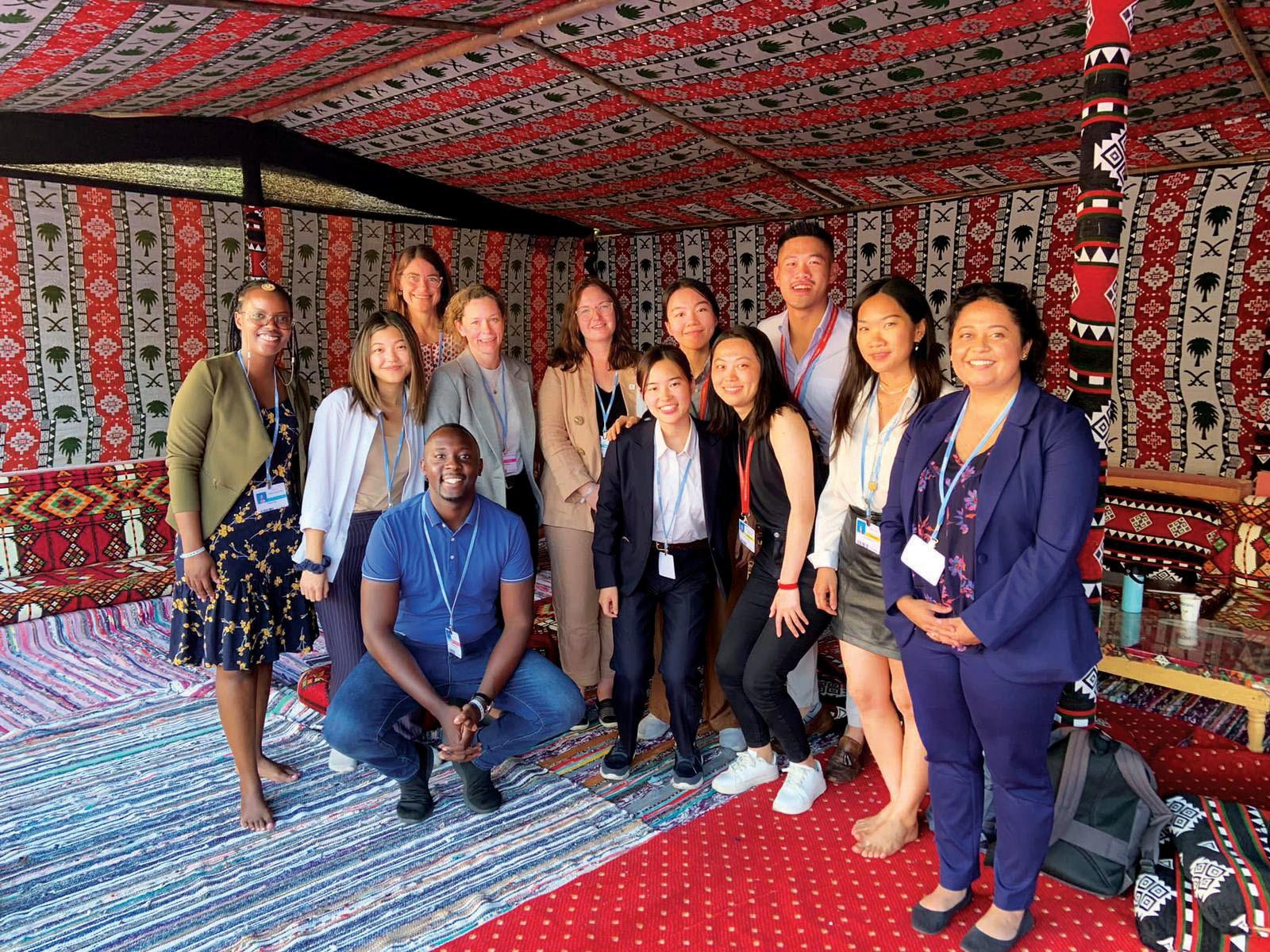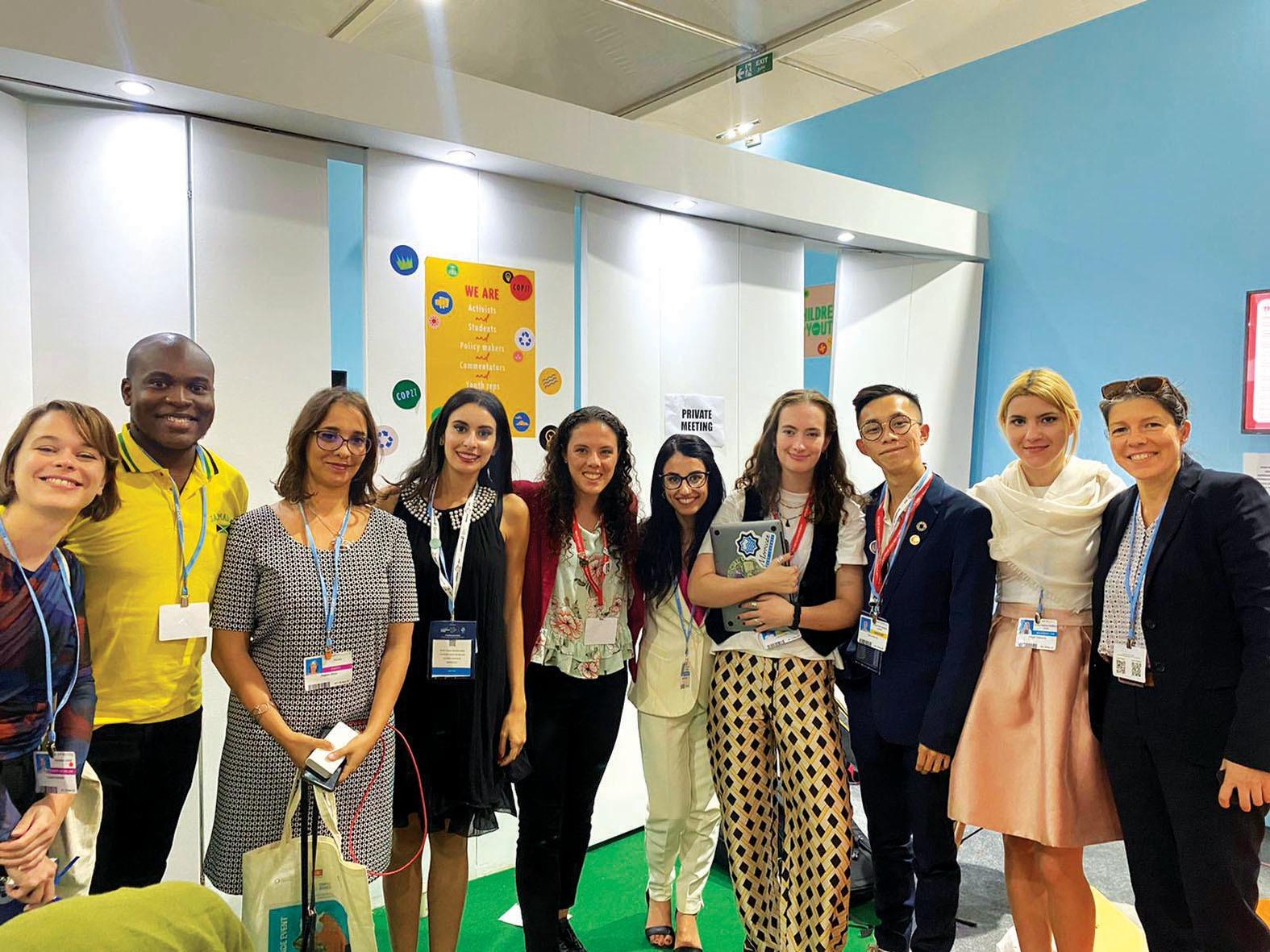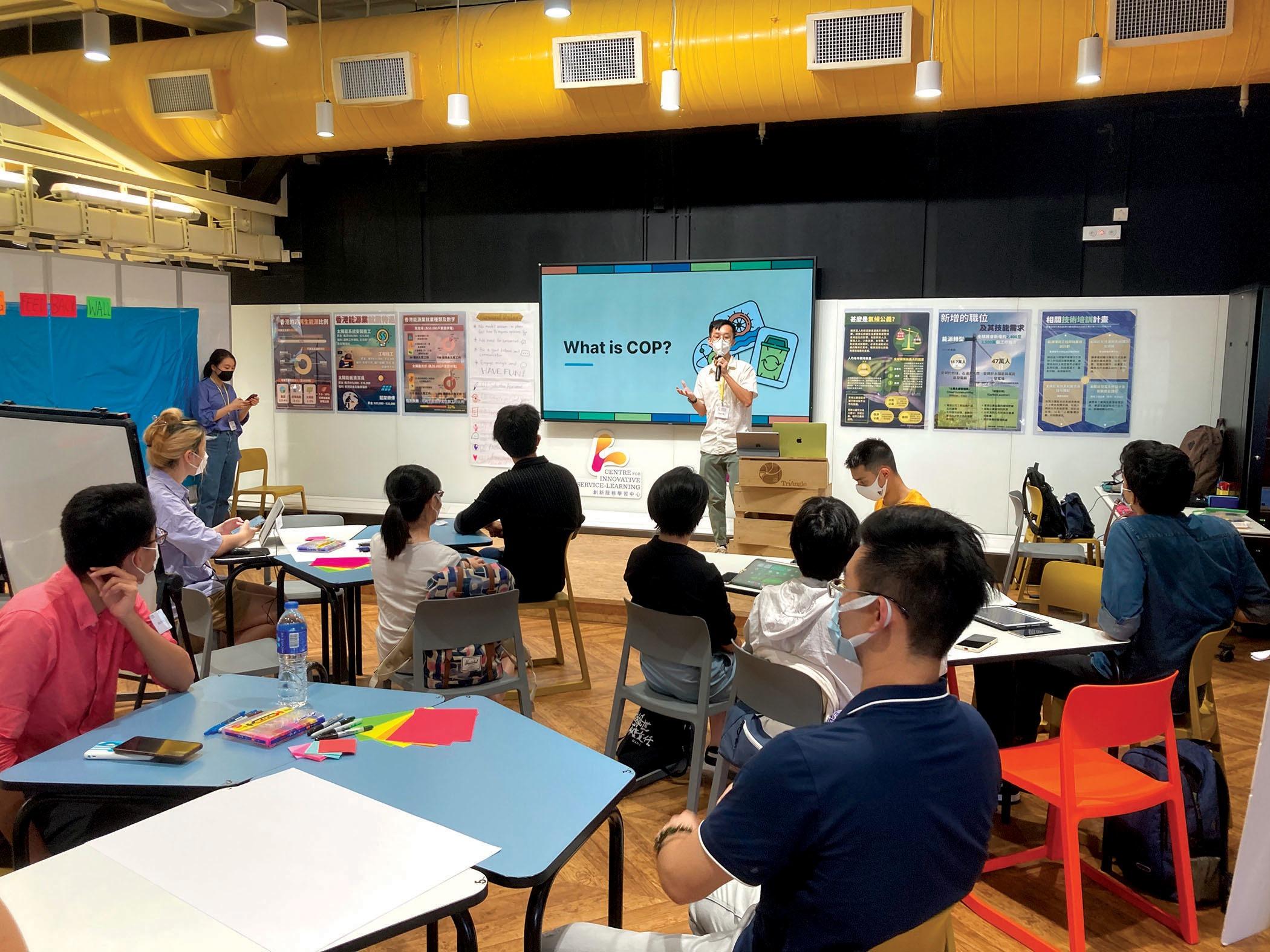Hong Kong’s climate change movements are gaining momentum with a growing number of young activists joining the ranks to make the government and the public more aware of protecting the environment. Gaby Lin reports from Hong Kong.
 Natalie Chung Sum-yue, a young climate advocate from Hong Kong, shows the regional flag of the special administrative region during her Antarctic expedition in February. The expedition offered Chung more solutions to fight climate change, which could be applied to her future work for environmental protection. (PHOTO PROVIDED TO CHINA DAILY)
Natalie Chung Sum-yue, a young climate advocate from Hong Kong, shows the regional flag of the special administrative region during her Antarctic expedition in February. The expedition offered Chung more solutions to fight climate change, which could be applied to her future work for environmental protection. (PHOTO PROVIDED TO CHINA DAILY)
A thundering roar shattered the absolute stillness in no man’s land, followed by others in rapid succession, as Natalie Chung Sum-yue — a young Hong Kong climate advocate — sat on an inflatable dinghy waiting to land on the world’s southernmost continent — the virtually uninhabited Antarctica.
She was completely taken aback by what she saw — huge ice chunks breaking off from a massive iceberg, crashing into the water and whipping up tsunami-like waves.
“Was it an explosion or something like a gunshot?” Chung, 25, recalls of that shocking moment. “It was actually an enormous piece of ice tumbling into the water. And it was like every second, we heard these noises of ice cracking and colliding into each other.”
The scene was just another wake-up call about climate change. Scientists in February found that the Antarctic sea ice had reached its lowest level since satellite records began 45 years ago.
If Antarctica continues to release massive amounts of water and further lift global sea levels, millions more people living in low-lying islands and coastal areas may face severe flooding as storm surges intensify. Hong Kong, as a subtropical harbor city constantly threatened by cyclones and typhoons, will not be immune from it.
Irked by the severity of climate change, Chung boarded a ship to Antarctica, hoping to seek some solutions to the problem. In February, she joined about 110 scientists, activists and policymakers from across the globe on a two-week-long expedition to the icy continent.
 Chung (third from right, back row) and other participants of the expedition take an inflatable dinghy to land on Antarctica. (PHOTO PROVIDED TO CHINA DAILY)
Chung (third from right, back row) and other participants of the expedition take an inflatable dinghy to land on Antarctica. (PHOTO PROVIDED TO CHINA DAILY)
Adopting new approach
During the journey, eight climate resolutions were adopted, including one to protect marine ecosystems through a three-dimensional approach.
“We need to protect our ocean with a climate-smart approach, and protect the depth and width of the ocean,” explains Chung. “We don’t just look at the marine ecological value of the area, but also how it works with mitigating climate change.”
The young advocate also drew inspiration from her new understanding of the oceans. In 2016, while a university student, Chung co-founded the environmental organization V’air Hong Kong with a group of like-minded peers. Taking advantage of Hong Kong’s abundant natural resources, the organization provides a variety of local tours and eco-workshops aimed at reducing the city’s carbon footprint by inspiring more people to explore local attractions rather than going overseas for their vacations.
V’air Hong Kong plans to organize further ocean-related tours, such as coastal walks and visits to mangrove forests. “I think one crucial thing we have to start doing is to provide better marine education for Hong Kong students.”
Another of the group’s goals is to empower the voices of the young generation in taking action against climate change. “I think nurturing the younger generation is something we need to continue doing, spreading the seeds to let them grow in everyone’s heart,” Chung says.
“We must take care of our future and face all these crises. As young people, I think we should take the lead in planning for the future we would like to see.”
 Carly Leung Pui-yee (sixth from left, back row) and other Hong Kong delegates to the 27th United Nations Climate Change Conference of the Parties meet with their US counterparts and members of the United Nations Framework Convention on Climate Change Adaptation Committee during the conference in Sharm el-Sheikh, Egypt. (PHOTO PROVIDED TO CHINA DAILY)
Carly Leung Pui-yee (sixth from left, back row) and other Hong Kong delegates to the 27th United Nations Climate Change Conference of the Parties meet with their US counterparts and members of the United Nations Framework Convention on Climate Change Adaptation Committee during the conference in Sharm el-Sheikh, Egypt. (PHOTO PROVIDED TO CHINA DAILY)
Bridging the gap
With climate change movements sweeping across the world in recent years, more Hong Kong young people are joining the ranks of climate advocates, among them Carly Leung Pui-yee.
Leung joined thousands of policymakers, experts and activists in Sharm el-Sheikh, Egypt, in November, negotiating collaborative efforts at the 27th United Nations Climate Change Conference of the Parties (COP27) to tackle climate challenges. Leung, as a young Hong Kong delegate, voiced the concerns and appeals of young people from the special administrative region.
“I talked to a lot of negotiators (who have been) trying to speak to community leaders,” says the 25-year-old, who also served as a member of the coordination team for the first-ever Children and Youth Pavilion at COP27. “I think there are some problems and challenges they are facing.”
Leung says many places, including Hong Kong, seem to lack effective communication channels between their governments and the grassroots community. “Sometimes, when the government tries to engage with the community, it often can’t find the channels to do so. Communities are doing a lot of things, but the government doesn’t know. Young people can actually help bridge the gap.”
Before going to Egypt, Leung and other delegates to COP27 co-hosted three climate change dialogue sessions at Hong Kong universities to convey their views to the city’s environment chief. With the goal of amplifying young voices, she is now serving as a mentor to a climate advocacy training program for young people run by local nongovernmental organization CarbonCare InnoLab.
 Ryan Yip Yuk-long (third from right), a Hong Kong delegate to COP27, shares a moment with other participants of the conference. (PHOTO PROVIDED TO CHINA DAILY)
Ryan Yip Yuk-long (third from right), a Hong Kong delegate to COP27, shares a moment with other participants of the conference. (PHOTO PROVIDED TO CHINA DAILY)
Expanding education
However, the SAR’s youth climate change movement is still in its infancy and has yet to be built up. Greenpeace East Asia campaigner Tom Ng Hon-lam says the scale of the movement “isn’t big enough”, partly because young people in Hong Kong lack a comprehensive awareness of the issue due to inadequate education on climate change. Despite the efforts of many NGOs and advocates to raise awareness of climate change among youth, it’s far from enough.
To develop “a sense of responsibility to protect the environment,” the Environment and Ecology Bureau says the SAR government has been organizing a “Student Environmental Protection Ambassador” program, offering participants a series of seminars, workshops and field trips.
The government revealed its emissions reduction road map, “Hong Kong’s Climate Action Plan 2050”, in 2021, which aims to cut carbon emissions in half by 2035 from the 2005 levels and reach carbon neutrality by 2050. The document mentions that climate change-related contents will be included in the curricula of tertiary institutions.
Climate change, however, is still a subtheme in the government’s campaigns and remains noncompulsory in local primary and secondary schools.
Ng says the education sector has to catch up with European countries where climate change is already embedded in students’ textbooks. “If you want to make a difference in climate change, the first step is to learn more about it.”
“I think it (climate change education) is quite crucial, especially nowadays, when it might seem a little bit farfetched” for Hong Kong residents, says Ryan Yip Yuk-long, who also attended COP27 as a member of Hong Kong’s youth team.
“Recalling what we have learned back in primary and secondary school, all I could remember are the three-color recycling bins,” says Yip, adding that he felt “something missing”. It was only through very limited lesson hours in Liberal Studies — once a compulsory subject for senior secondary school students — that he could get a glimpse of climate change and sustainable development before he became a university student.
According to a joint survey conducted in January 2022 by Yip’s advocacy group Climate Sense as well as the Hong Kong Public Opinion Research Institute, more than 90 percent of 4,790 respondents believed that climate change education should be given more emphasis in schools.
 Yip holds a session at a university in Hong Kong in the summer of 2022 to promote climate change dialogue among young people in the city. (PHOTO PROVIDED TO CHINA DAILY)
Yip holds a session at a university in Hong Kong in the summer of 2022 to promote climate change dialogue among young people in the city. (PHOTO PROVIDED TO CHINA DAILY)
Empowering young voices
Increasing the proportion of climate change elements in schools, on the other hand, could ensure that young people from low-income backgrounds, who may not be able to have ready access to higher education, would get a better grasp of the problem and obtain the information they need to deal with the challenges they might face.
Vulnerable groups, who are disproportionately bearing the brunt of the consequences of climate change, are being neglected in Hong Kong’s climate adaptation governance and do not have enough support from the government and society, according to several advocates who spoke to China Daily.
For young people among these groups, unlike the middle class, they may not have the conditions to make their demands heard, let alone resources, such as platforms, knowledge and spare time, to take more action on climate change.
Lee Kim-ming, assistant professor of Faculty of Social Sciences at UOW College Hong Kong, points out that this group of young people may be unable to get sufficient support from their families, schools and communities that “have neither the resources nor the awareness” of supporting young environmentalists.
To amplify the voices of youths, regardless of their backgrounds, setting up institutional channels to let them express opinions is essential. “They can individually do something in their everyday lives to reduce their carbon footprint or help protect the environment. But they may have difficulties seeing how their own efforts can make a big difference unless they are formally incorporated into the policymaking process,” Lee says.
He suggests that government officials and politicians, such as legislators and district councilors, hold regular meetings with young people to establish trust and efficacy, and recruit more of them to join environment-related committees.
Ng says authorities should take the lead in showing the public that carbon neutrality is “actually possible to achieve”, providing more platforms for young people, and mobilizing future generations to share their ideas and contribute more.
Nevertheless, Ng sees youth power becoming stronger and is confident it will grow. “We are seeing a trend where young people are becoming the leading force in Hong Kong’s climate change movement. We believe they are on the way.”
Q&A with Natalie Chung Sum-yue on her Antarctica expedition
Could you briefly tell us about your expedition to Antarctica?
It was a 12-day voyage led by marine biologist Dr Sylvia Earle. A lot of the climate change mitigation solutions are traditionally focused on land-based solutions. So our goal is to promote and champion a set of resolutions that can protect the climate by leveraging the potential of oceans.
You have said you saw some “accelerated environmental changes” during the expedition. What exactly did you see?
One thing we saw was the change in the color of the ice. Antarctic ice used to be completely white, but we saw some green dots and realized those are Antarctic algae. The reason why algae are booming on the ice surface is because of the warmer temperatures that allow them to grow.
Did the expedition bring you a new understanding of ocean conservation?
Antarctic krills are the basis of the Antarctic food chain. In the past 40 years, we lost almost 70 percent of the krills’ population because of overfishing and warmer ocean temperatures. So one of the things we have noticed is how overfishing is harming the marine ecosystem.
Contact the writer at gabylin@chinadailyhk.com


